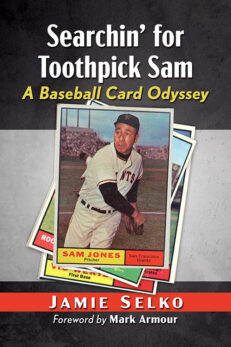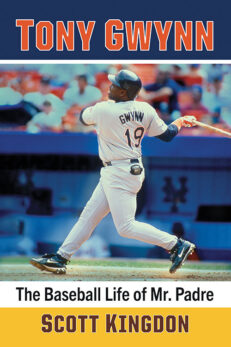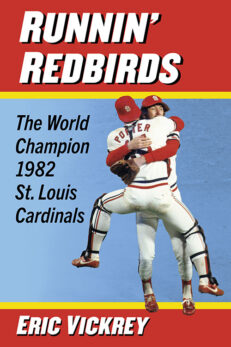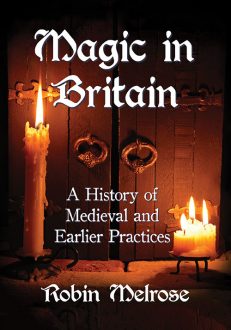Magic in Britain
A History of Medieval and Earlier Practices
$39.95
In stock
About the Book
Magic, both benevolent (white) and malign (black), has been practiced in the British Isles since at least the Iron Age (800 BCE–CE 43). “Curse tablets”—metal plates inscribed with curses intended to harm specific people—date from the Roman Empire. The Anglo-Saxons who settled in England in the fifth and sixth centuries used ritual curses in documents, and wrote spells and charms. When they became Christians in the seventh century, the new “magicians” were saints, who performed miracles. When William of Normandy became king in 1066, there was a resurgence of belief in magic. The Church was able to quell the fear of magicians, but the Reformation saw its revival, with numerous witchcraft trials in the late 16th and 17th centuries.
About the Author(s)
Bibliographic Details
Robin Melrose
Format: softcover (7 x 10)
Pages: 270
Bibliographic Info: 39 photos, notes, bibliography, index
Copyright Date: 2018
pISBN: 978-1-4766-7400-1
eISBN: 978-1-4766-3254-4
Imprint: McFarland
Table of Contents
Introduction 1
1. Human Bones, Amulets and Animals: Magic and Ritual in Iron Age Britain 7
2. Witchcraft, Curse Tablets and Fear of the Restless Dead: Magic in Roman Britain 17
3. Germanic Paganism, Magic and Witchcraft in Anglo-Saxon England 42
4. Paganism, Christianity and the Cult of Saints in Early Northumbria 60
5. Paganism and Christianity in Early East Anglia and Mercia 80
6. Paganism and Christianity in the Early Kingdom of Wessex 93
7. The Kingdom of Wessex, the Vikings, and Pagan Amulets and Christianity in the Danelaw 109
8. Saints and Magic After the Norman Conquest: Anglo-Saxon Saints 131
9. New English Saints and Monasteries, and Late Medieval Ritual Curses 154
10. The Saints of Wales and Scotland: Holy Islands, Ritual Curses and Healing Waters 175
11. Pagan Magic in Late Medieval Christianity 199
12. Magic, Cunning-Folk and Witchcraft Trials in the Sixteenth and Seventeenth Centuries 215
Conclusion 240
Chapter Notes 243
Bibliography 256
Index 263
Book Reviews & Awards
“The author allows the reader to see how the relationship between magic and the church changed over time…a collection of fascinating stories about people, places, and practices”—Booklist
• “Melrose presents a concise historical survey of magic practices in Britain. Using archaeological and written sources, Melrose explores how magic was practiced from Britain’s Iron Age through the Reformation….the work is entertaining, insightful, and well researched, offering an excellent overview of the development and practice of magic throughout Britain’s history…. recommended”—Choice
• “Well-researched presentation of each category of magical practice connected to its geographical and archeological roots. For every category discussed in Melrose’s work, he provides an extensive exploration of its people and place names, demonstrating an encyclopedic knowledge of British geography and early British history”—SMART: Studies in Medieval and Renaissance Teaching





